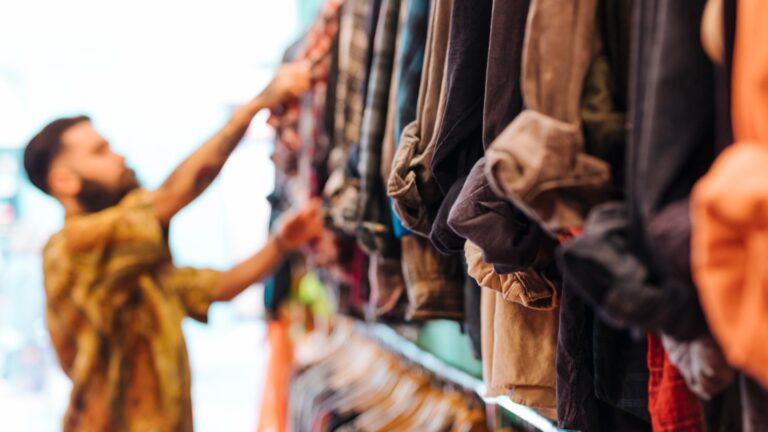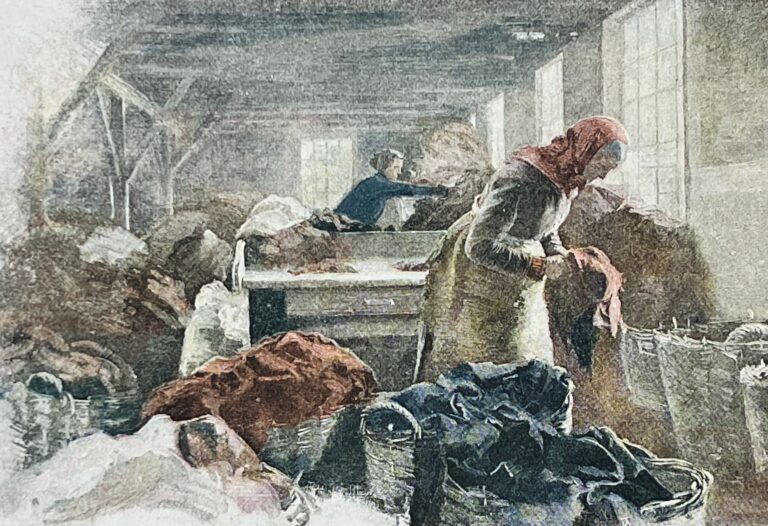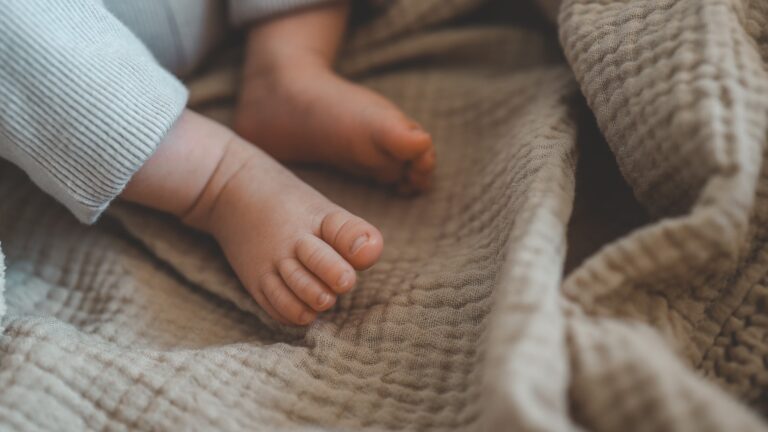Cleaning Cloths vs Rags: Unveiling the Best Cleaning Companion
Cleaning is an essential part of our daily routine, and the tools we use can significantly impact the efficiency of the process. Two common choices are cleaning cloths and rags, each with its unique characteristics. In this article, we will delve into the differences between cleaning cloths vs rags, helping you make an informed decision for your cleaning needs.
Overview of rags
Rags, often overlooked yet indispensable, play a crucial role in various aspects of daily life. From cleaning spills to tackling tough stains, these versatile pieces of repurposed fabric have a wide range of applications. In this overview, we delve into the types, uses, and eco-friendly aspects of rags, shedding light on their significance in maintaining cleanliness and sustainability. Whether you’re a DIY enthusiast or a conscious consumer, understanding the diverse world of rags opens up new possibilities for efficient and environmentally friendly solutions.
Various types of rags with distinct qualities encompass:
- White Cleaning cloths: Crafted from recycled laundry-grade sheeting, these cloths undergo a thorough washing and sterilization process, ensuring cleanliness and hygiene.
- T-Shirt Cloths: Repurposed from colored, medium-weight cotton t-shirts, these rags provide a sustainable solution for cleaning tasks. The recycling of t-shirts contributes to their eco-friendly appeal.
- Flannel Wyncette: Distinguished by its softer texture compared to cotton t-shirts, flannel wyncette rags offer a gentle yet effective option for various cleaning needs. The material’s softness enhances its suitability for specific surfaces.
- Terry Toweling: Derived from ex-commercial laundry sources, including bathrobes and towels, Terry toweling rags bring durability and absorbency to the forefront. These rags are well-suited for tasks requiring effective moisture absorption.
This diverse range of rag types showcases versatility and sustainability, catering to different preferences and cleaning requirements.
The Perceived Benefits of Rags
Rags, often underestimated in their simplicity, offer a host of perceived benefits that make them indispensable in various settings. From household chores to industrial applications, the advantages of using rags extend beyond mere convenience. Here are some perceived benefits:
- Versatility: Rags exhibit versatility in their applications, capable of handling a wide range of cleaning tasks. Whether it’s wiping surfaces, absorbing spills, or tackling tough stains, rags prove adaptable to diverse situations.
- Cost-Effectiveness: Repurposing materials to create rags, especially those made from reclaimed textiles, contributes to a cost-effective cleaning solution. The economical initial investment makes them an attractive choice for budget-conscious consumers.
- Eco-Friendliness: Opting for rags made from recycled or reclaimed materials aligns with eco-friendly practices. This sustainability aspect resonates with individuals seeking greener alternatives in their cleaning routines.
- Absorbency: Depending on the type, rags, particularly terry toweling and cotton varieties, boast excellent absorbency. This makes them effective in managing spills and maintaining surfaces in various environments.
- Scrubbing Power: Textured varieties like terry rags provide enhanced scrubbing power, making them ideal for tasks that require a bit of extra muscle. This quality ensures their effectiveness in heavy-duty cleaning situations.
- Lint-Free Options: Certain rag types, such as lint-free rags, minimize the risk of leaving behind fibers during cleaning. This is particularly valuable in tasks where a pristine, lint-free finish is essential.
- Customizable Cleaning: Rags come in different colors, allowing for color-coded cleaning strategies. This minimizes the risk of cross-contamination and ensures a systematic and hygienic approach to cleaning.
- DIY Appeal: The accessibility of materials for crafting rags allows for DIY solutions. This appeals to those who enjoy creating their cleaning tools or repurposing textiles for a specific cleaning purpose.
The perceived benefits of rags extend beyond their basic functionality, making them a valuable asset in the world of cleaning solutions. Whether it’s their versatility, cost-effectiveness, or eco-friendly attributes, rags continue to be a preferred choice for many discerning users.
The Realities of Rags: Navigating Potential Challenges
While rags undeniably offer versatility and practicality, it’s essential to acknowledge that the realities of using them can pose certain challenges. These challenges, though not deterrents, warrant consideration for a more informed approach to their usage:
- Hygiene Concerns: Rags, especially if not cleaned and maintained properly, can become breeding grounds for bacteria. Ensuring regular washing and sterilization is crucial to mitigate hygiene concerns.
- Environmental Impact: Some types of rags, particularly those made from synthetic materials, may contribute to environmental concerns during production and disposal. Opting for eco-friendly alternatives can help address this issue.
- Limited Lifespan: Depending on the material and frequency of use, rags may have a limited lifespan. Constant wear and tear can impact their effectiveness over time, necessitating regular replacement.
- Task-Specific Effectiveness: While versatile, not all types of rags excel in every cleaning task. Selecting the appropriate type for specific cleaning needs is crucial to ensure optimal performance.
- Lint and Residue: Certain rag types may leave behind lint or residues during cleaning. This can be problematic, especially in environments where a pristine finish is essential.
- Staining Concerns: Colored rags, if not properly tested for colorfastness, may pose a risk of staining surfaces during cleaning. Precautionary measures should be taken to avoid potential discoloration.
- Professional Settings: In some professional settings, the use of rags may not meet certain cleanliness standards or regulatory requirements. Consideration of alternative cleaning solutions may be necessary.
- Storage Challenges: Storing rags properly to prevent moisture buildup and potential mold growth can be challenging. Adequate storage solutions are vital to maintaining their usability.
Acknowledging these realities ensures a pragmatic approach to the use of rags. While they remain valuable tools, addressing these challenges proactively allows users to maximize their benefits while mitigating potential drawbacks.
The Advantages of Al Mnwar Cleaning Cloths Over Rags
In the realm of cleaning tools, Al Mnwar cleaning cloths stand out for several reasons, offering distinct advantages over traditional rags. Here’s a closer look at why Al Mnwar cleaning cloths are a preferred choice in various cleaning scenarios:
- Consistent Quality: Al Mnwar cleaning cloths are manufactured with precision and adhere to strict quality standards. This consistency ensures that each cloth performs reliably, providing a dependable cleaning experience.
- Hygienic Assurance: Designed with hygiene in mind, Al Mnwar cleaning cloths are often produced from materials that resist bacterial growth. This feature is particularly advantageous in environments where cleanliness is paramount.
- Task-Specific Varieties: Al Mnwar offers a range of cleaning cloths tailored for specific tasks. Whether it’s glass cleaning, surface disinfection, or general-purpose wiping, there’s a Al Mnwar cloth designed to meet the demands of various cleaning needs.
- Efficient Absorption: The materials used in Al Mnwar cleaning cloths are chosen for their superior absorbency. This efficiency ensures quick and effective absorption of liquids, contributing to more efficient cleaning processes.
- Lint-Free Performance: Al Mnwar cloths are engineered to minimize lint, providing a lint-free finish during cleaning. This is particularly crucial in environments where leaving behind fibers is not acceptable.
- Eco-Friendly Options: Al Mnwar recognizes the importance of sustainability. Some Al Mnwar cleaning cloths are made from environmentally friendly materials, appealing to users with a focus on eco-conscious choices.
- Color-Coded Systems: Al Mnwar employs color-coded systems for its cleaning cloths, allowing users to differentiate between cloths designated for specific tasks. This organizational approach enhances efficiency and reduces the risk of cross-contamination.
- Professional Appearance: Al Mnwar cleaning cloths often boast a professional appearance, making them suitable for use in various professional settings. This can contribute to a positive image in environments where cleanliness is a reflection of professionalism.
- Cost-Efficiency in the Long Run: While Al Mnwar cleaning cloths may have a higher initial cost compared to traditional rags, their durability and task-specific effectiveness contribute to long-term cost-efficiency.
- Customizable Dispensing Systems: Al Mnwar provides dispensing systems that allow for controlled and customizable usage of cleaning cloths. This not only reduces waste but also ensures a more organized and efficient cleaning process.
The advantages of Al Mnwar cleaning cloths over traditional rags are evident in their quality, hygiene features, task-specific varieties, and commitment to sustainability. Making the switch to Al Mnwar represents a step toward a more efficient, effective, and professional approach to cleaning.
Let the Numbers Speak: Tangible Benefits of Al Mnwar Cleaning Cloths
Behind the statistics lie compelling narratives of measurable improvements and substantial savings. Extensive studies reveal that customers incorporating Al Mnwar cleaning cloths into their cleaning routines can anticipate:
- Up to 35% Reduction in Cleaning Time: Al Mnwar cleaning cloths streamline the cleaning process, resulting in a remarkable reduction of up to 35% in cleaning time.
- Up to 41% Decrease in Solvent Usage: Leveraging the efficiency of Al Mnwar cleaning cloths translates to a substantial decrease of up to 41% in the need for solvents during cleaning.
- Up to 31% Less Worker Effort: The effectiveness of Al Mnwar cleaning cloths eases the workload for cleaning staff, leading to a notable reduction of up to 31% in worker effort.
- Up to 80% Savings in Waste Handling Costs: Al Mnwar’s commitment to sustainability extends to waste reduction, resulting in an impressive up to 80% decrease in waste handling costs.
Are you ready to revolutionize your cleaning practices and, in turn, your bottom line? Take the first step by obtaining a complimentary rags waste cost calculation, personalized Al Mnwar product recommendations, and the opportunity for a commitment-free trial. Book your consultation today and witness firsthand the transformative impact of Al Mnwar cleaning cloths on your overall cost of cleaning.
Types of Cleaning Cloths
When it comes to cleaning cloths, there are several options available in the market. Understanding these types can aid in choosing the most suitable one for your specific cleaning tasks.
Microfiber Cloths
Microfiber cloths are celebrated for their exceptional cleaning abilities. Their fine fibers are adept at capturing dust and particles, making them ideal for various surfaces, including glass and electronics.
Cotton Cloths
Cotton cleaning cloths are a classic choice. They are absorbent and versatile, suitable for general cleaning purposes. Their soft texture makes them safe for delicate surfaces.
Terry Cloth
Terry cloth cleaning cloths are known for their textured surface, providing additional scrubbing power. They are excellent for tackling stubborn stains and grime.
Material and Absorbency
The material of cleaning tools plays a crucial role in their performance. Let’s explore how materials impact absorbency and usability.
Advantages of Microfiber in Cleaning
Microfiber’s fine fibers not only capture dust effectively but also make it a highly absorbent material. This ensures efficient cleaning without leaving streaks or residue.
Absorbency of Cotton Rags
Cotton rags, known for their absorbency, excel in tasks that involve liquids. They are particularly useful for wiping spills and maintaining surfaces in kitchens and bathrooms.
Durability and Longevity
The durability of cleaning tools is a key consideration for cost-conscious consumers. Let’s examine the lifespan of cleaning cloths and rags.
Lifespan of Cleaning Cloths
Microfiber cloths, when properly cared for, can have a relatively long lifespan. Regular washing and avoiding the use of fabric softeners contribute to their durability.
Usability of Rags Over Time
Rags, especially those made from durable materials like cotton, can withstand repeated use. Their usability extends over time, making them a cost-effective choice.
Cleaning Performance
The primary goal of any cleaning tool is effective performance. Let’s evaluate how cleaning cloths and rags fare in various cleaning scenarios.
Effectiveness of Microfiber in Capturing Dust
Microfiber’s ability to capture even the smallest particles makes it highly effective in dusting. This quality is particularly valuable for individuals with allergies or respiratory sensitivities.
Stain Removal with Rags
Rags, with their textured surfaces, excel in stain removal. Whether it’s a kitchen spill or a stubborn mark on a countertop, rags can provide the necessary scrubbing power.
Cost Considerations
The cost of cleaning tools involves both initial expenses and long-term value. Let’s compare the costs associated with cleaning cloths and rags.
Initial Cost vs. Long-Term Value
While microfiber cloths may have a higher initial cost, their durability and performance contribute to long-term value. Rags, being often repurposed, offer an economical initial investment.
Eco-Friendliness
In an era of increasing environmental consciousness, understanding the eco-friendliness of cleaning tools is crucial.
Environmental Impact of Different Materials
Microfiber production may involve synthetic materials, raising environmental concerns. On the other hand, rags made from reclaimed textiles contribute to sustainable practices by repurposing existing materials.
Maintenance and Care
Proper maintenance enhances the longevity of cleaning tools. Let’s explore the necessary care routines for cleaning cloths and rags.
Washing Instructions for Cleaning Cloths
Microfiber cloths require gentle washing without fabric softeners to maintain their effectiveness. Follow manufacturer instructions for the best results.
Handling and Reusing Rags
Rags, being sturdy, can withstand regular washing and reuse. Proper handling and hygiene practices ensure their continued effectiveness.
Specialized Uses
Beyond general cleaning, both cleaning cloths and rags find specialized uses in various scenarios.
Cleaning Cloths in Electronics Cleaning
Microfiber cloths, due to their non-abrasive nature, are ideal for cleaning delicate electronics surfaces like screens and lenses.
Rags for Heavy-Duty Tasks
Rags, with their robust textures, are well-suited for heavy-duty cleaning tasks, such as tackling grease or grime in workshops or industrial settings.
Popularity and Trends
Consumer preferences play a significant role in shaping the market for cleaning products. Let’s explore the current popularity and trends in choosing between cleaning cloths and rags.
Market Trends for Cleaning Products
The market is witnessing a growing demand for eco-friendly options, influencing the popularity of rags made from reclaimed textiles. However, microfiber cloths continue to dominate the market due to their superior cleaning capabilities.
Consumer Preferences
Understanding what influences consumers’ choices can provide valuable insights into the decision-making process.
Factors Influencing Choices
Consumers often consider factors such as convenience, effectiveness, and environmental impact when choosing between cleaning cloths and rags. Personal preferences and specific cleaning needs also play a role.
Pros and Cons
Let’s summarize the advantages and disadvantages of both cleaning cloths and rags to help you make an informed decision.
Summary of Advantages and Disadvantages
| Cleaning Cloths | Rags |
| Highly effective in capturing dust | Sustainable and eco-friendly |
| Durable with proper care | Versatile in various cleaning tasks |
| Higher initial cost, but long-term value | Economical initial investment |
| May involve synthetic materials | May not be as effective in specialized tasks |
Making the Right Choice
Considering all factors, making the right choice between cleaning cloths and rags depends on your individual preferences and cleaning needs.
Factors to Consider
| 1. Specific cleaning tasks | 2. Environmental considerations |
| 3. Frequency of use | 4. Budget considerations |
Conclusion
In conclusion, both cleaning cloths and rags have their merits, catering to different cleaning needs. Whether you prioritize effectiveness, sustainability, or budget, understanding the distinctions ensures you make an informed decision for a cleaner, more efficient home.







